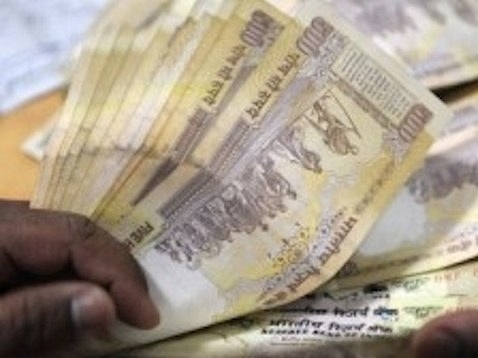Economy
How To Keep GST Rate Down: Exempt None, And Pay Everyone Rs 1,000 p.a.
- We may end up having a relatively high GST rate. One reason for this is the large number of commodities that may get exempted for real or populist reasons.
- In the long run, the best GST rate would be a low one that exempts no good, but balanced by a universal basic compensatory cash payment.

Currency
One of the reasons why we may end up having a relatively high standard goods and services tax (GST) rate – possibly around 20 percent – is the large number of commodities that get exempted for real or populist reasons. Chief Economic Advisor Arvind Subramanian pointed out the other day that 54 percent of items in the Consumer Price Index will not be covered by GST.
Even those that get
covered, may be under the merit rates, which will be well below the standard
rate, wherever it is fixed. A Business
Standard story today (8 August) says the government is mulling bringing 200
items, including premium packaged food items like tea and coffee, out of the
exemption list for GST.
This is the way to go,
but an even better way would be to absolutely minimise the exemptions. And, to
neutralise the regressive nature of cascading GST taxation on the poor, to
compensate the latter with cash transfers at a moderate level.
In the long run, the best
GST rate would be a low one that exempts no good, but balanced by a universal
basic compensatory cash payment.
How would this work?
Let’s assume that almost all goods barring 10-20 (basic cereals, pulses, veggies, and essential medicines) pay the merit rate of 12 percent tax, which will anyway be below the standard rate of tax. This is where calculations about what the poor will lose out by way of higher tax will have to come into play.
If we assume a ballpark
figure of, say, Rs 1,000 per person per year as GST payment on account of
everyday consumption of essential items, a universal payment of this amount
into all Jan Dhan accounts, authenticated by Aadhaar, would work out to around
Rs 1,25,000 crore annually. Each household of five will then get Rs 5,000 as
GST compensation annually, but would have to buy goods from the market by paying
higher GST.
The individual GST compensation
level of Rs 1,000 per person per year is compatible with a minimum per capita spend
of Rs 25 per person per day; one can assume that the extra amount needed to
actually cross the poverty line (wherever one draws it) will come from regular or irregular employment of any kind. The Rangarajan committee said that a daily spend of Rs 47 per person per day in cities will keep them above the poverty line.
The right combo for a clean and efficient GST is to combine it with direct compensation to the poor. One can be sure all politicians will love putting cash in the “jholis” of the poor.
This is not to suggest
that Rs 1,000 per person is the right level of compensation for the poor to
neutralise the regressive nature of the tax, but whatever the figure is, this
is the way to go. It should be possible to restrict the payments to rural
areas, or even identified below-poverty-line cases, but it would allow the GST
to be a truly imaginative tax whose standard rate can be reduced as revenues
surge.
Any takers?
Support Swarajya's 50 Ground Reports Project & Sponsor A Story
Every general election Swarajya does a 50 ground reports project.
Aimed only at serious readers and those who appreciate the nuances of political undercurrents, the project provides a sense of India's electoral landscape. As you know, these reports are produced after considerable investment of travel, time and effort on the ground.
This time too we've kicked off the project in style and have covered over 30 constituencies already. If you're someone who appreciates such work and have enjoyed our coverage please consider sponsoring a ground report for just Rs 2999 to Rs 19,999 - it goes a long way in helping us produce more quality reportage.
You can also back this project by becoming a subscriber for as little as Rs 999 - so do click on this links and choose a plan that suits you and back us.
Click below to contribute.
Latest